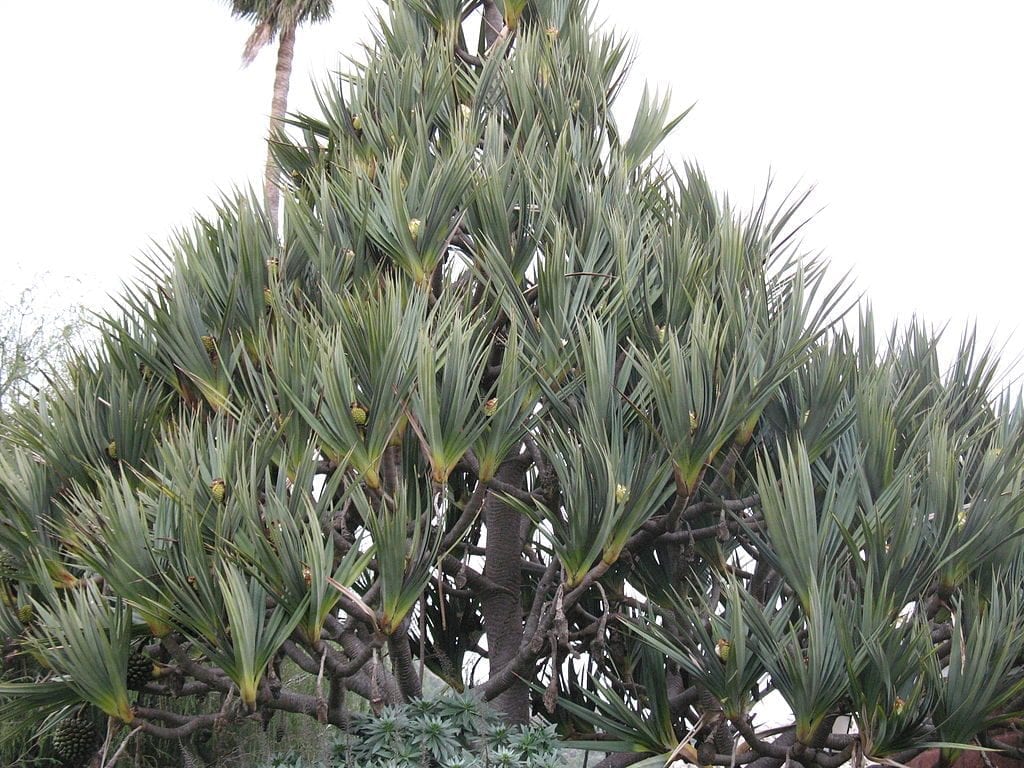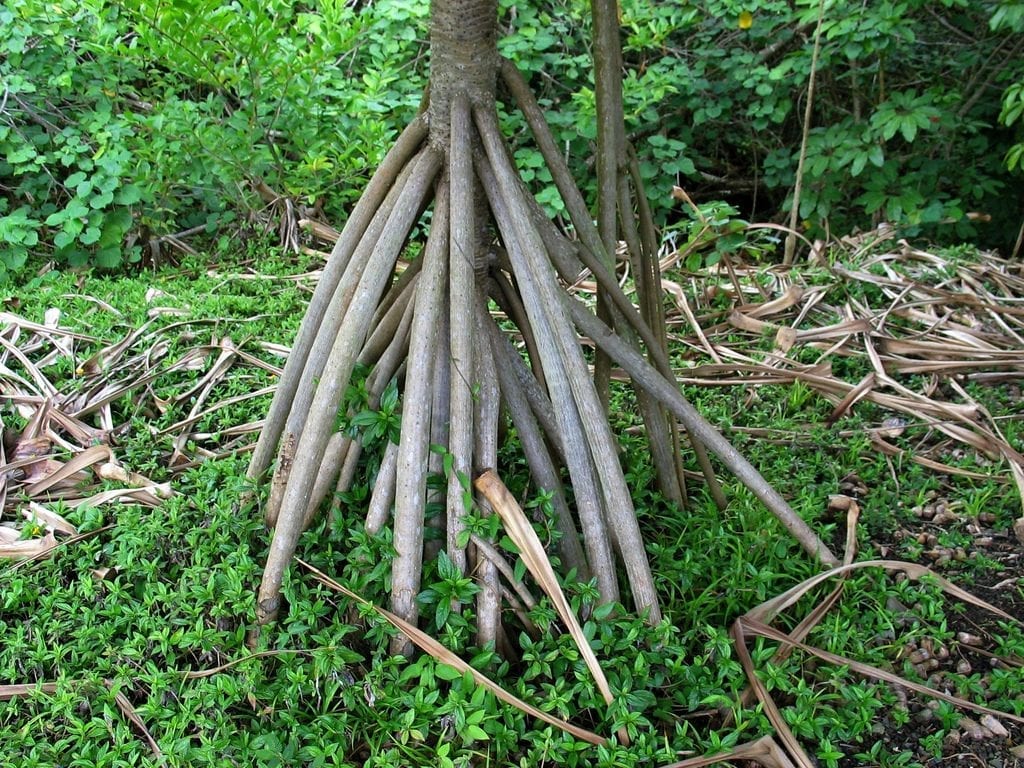
Pandanus veitchii - Image - Wikimedia / David J. Stang
El pandanus is one of the most curious tropical shrubs or trees that exist: at first glance, it might give us the impression that they resemble yuccas, but then you look at the trunk and, more specifically, its aerial roots, and you realize that little or it has nothing to do with those.
In addition, unfortunately its resistance to cold is lower, but it can be grown indoors without problems if it is kept in a well-lit room 🙂. Keep finding out about him.
Origin and characteristics

Pandanus utilis - Image - Wikimedia / Dryas
When we talk about the pandanus we refer to a series of evergreen plants that belong to the genus Pandanus, which is composed of more than 600 species native to the tropical regions of the Pacific, although it is more common in low islands of Polynesia and Micronesia.
Its leaves are more or less triangular and elongated, more or less leathery and smooth, of a color that can range from green to reddish-brown. But what stands out the most are its aerial roots and its trunk, which is the same diameter in its entirety. The fruit is a drupe that floats on water, which helps it spread to other islands.
Main species
The most common are:
- Pandanus amyllifolius: It is native to Southeast Asia, and is used as an edible. Its fresh or withered leaves enhance the flavor of foods from their places of origin, such as rice dishes.
- Pandanus utilis: it is native to Madagascar and Mauritius. It reaches a height of up to 5 meters, and its fruit is edible although it has little flavor.
- Pandanus tectorius: it is originally from Queensland (Australia) and Indonesia. It reaches 9 meters in height, and its fruits are edible.
Uses
Apart from being used as an ornamental plant, it has other uses:
- Leaves: they are used in the manufacture of baskets, to cover roofs and as a repellent for cockroaches.
- FruitsThey can be eaten once cooked, and the scented drupes are used to make necklaces and crowns.
What are their cares?

Pandanus tectorius - Flickr / David Eickhoff
If you want to have a copy, we recommend that you provide it with the following care:
- Location:
- Exterior: in semi-shade.
- Indoor: in a room where a lot of light enters naturally.
- Irrigation: moderate, about 3 times a week in summer and about 2 / week the rest of the year.
- Subscriber: in spring and summer with organic fertilizers, such as guano for instance. Use the liquid format if you have it in a pot, and follow the instructions specified on the container.
- Multiplication: by seeds and cuttings in spring.
- Rusticity: being tropical they do not resist much the cold. The species that endures the longest is the Pandanus utilis, which can be kept outside all year long if the temperature does not drop below -1,5ºC.
What did you think of the pandano?